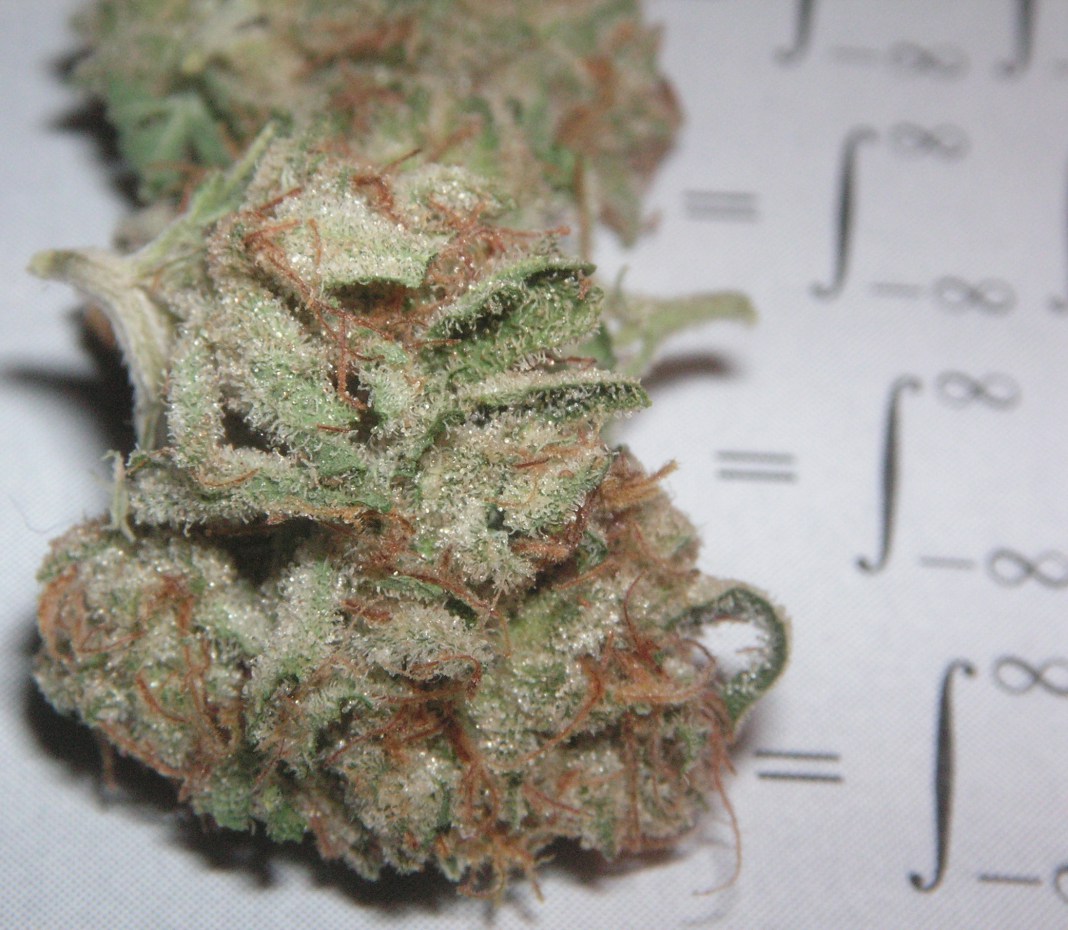While the scientific and clinical data surrounding the use of medical cannabis for chronic pain is limited, emerging data from a new 2017 study in Italy presents findings that medical cannabis seems to be an “effective and safe” therapy for chronic pain (Fanelli et al., 2017). Additionally, data from another recent study by Carroon and colleagues depicts the decline in “the use and abuse of prescription drugs” primarily in “states where medical cannabis is legal” (2017).
At a time where the opioid drug crisis has reached its peak in the United States, cannabis may indeed provide a safe and effective gateway to recovery and independence from addicting opioid pain medications such as Vicodin, Oxycodone and Dilaudid. Furthermore, substituting cannabis for drugs like benzodiazepines and opioids, a combination responsible for countless fatal overdoses, may reduce this risk in patients prescribed such dangerous polydrug combinations.
This review will examine these two recent studies as well as more pertinent data that revolves around medical cannabis as an alternative to combat chronic pain and reduce certain prescription drug use. While much remains to be seen regarding long-term clinical data surrounding therapeutic cannabis use, the demonstrable safety profile of cannabis and it’s documented efficacy in treating chronic pain, while also safely mitigating the use of certain pharmaceuticals, warrants a comprehensive discussion and further investigation into cannabis as an alternative medicine.
It is estimated that 11.2% of the U.S. adult population, approximately 25.3 million people, suffer from chronic pain (Nahin, 2015). Current pharmacological treatments for pain commonly include non-narcotic options such as NSAID’s (Motrin, Advil, Toridol) as well as opioid narcotics (Vicodin, Oxycodone), the latter of which carries significant potential for dependency and addiction. The current opioid epidemic plaguing the U.S. has made clear the need for a safer, more effective alternative for treating chronic pain.
As more nations integrate cannabis into their healthcare systems, emerging data shows promising signs for the treatment of chronic pain with medical cannabis. Following the passage of a 2015 law in Italy, all patients who opted to use cannabis medically were required to register themselves in a database to facilitate data collection (Fanelli et al., 2017). As a result, today we have findings from a new 2017 retrospective analysis exploring the “relationship” between cannabis and intractable chronic pain among an Italian cohort of 614 patients, mostly older females above 61, out of a University in Pisa.
The homogeneity of the sample population allows for more control over confounding factors, however, makes it more difficult to apply the results to other populations outside of older Italian women. Due to the fact that cannabis is a plant, which contains hundreds of potential therapeutic materials and various compositions, it is relatively complex to control and define the pharmacology as well as other variables in the study, and therefore demographic factors in the sample population become much more important.
Patients in the study consumed cannabis tea orally, as the primary route of administration. This is uniquely worth noting since consuming “whole plant” cannabis as botanical medicine unlocks a much more diverse symphony of cannabinoids (active chemical compounds in cannabis) and terpenes (aromatic hydrocarbons that give cannabis its unique smell and bind to receptors in the brain, complementing the cannabinoids to provide more nuanced effects). This pharmacological synergy among “~140 distinct cannabinoids and ~400 terpenes, the relative levels of which largely determine their therapeutic effect” is called the “entourage effect” and is exactly what makes cannabis such a unique medicinal product (Fanelli et al., 2017). This dramatic variety in cannabis constituents not only vary from strain to strain, but in between individual plants and even individual flowers as well.
The fact that cannabis is a living, breathing plant means no two plants are exactly the same. Compound this with the amalgam of different formulations and routes of administration available today (smoking, vaporization, oral, topical and transdermal), all with different bioavailabilities levels, and we begin to see the difficulty in achieving consistency, accuracy and complying formal regulations and a universal standard of care in regards to medical cannabis. The benefits of consuming whole plant medicine over isolated/synthetic cannabinoid formulations can be seen in the efficacy of the cannabis-based drug Sativex, a whole plant formulation, over synthetic formulations like Marinol (Russo, 2008).
Further investigation into the different permutations and combinations of cannabinoids and terpenes in its various formulations is required to gain a better understanding of the therapeutic mechanisms of cannabis. The beauty of cannabis as a medicine lies in this multidimensional pharmacological opus dubbed the “entourage effect”. Analysing the types of cannabis formulations and composition consumed by the patients in this study can provide further insight into the treatment of chronic pain with cannabis and maybe to offer an alternative well-defined formulation of active materials composition for new clinical trials in the future.
Patients in the Italian cohort had the benefit of experiencing whole plant medicine, and thus, the “entourage effect”, when consuming their cannabis tea during the study. It should be noted that “~92% of the patients in the study used the high THC, low-CBD Bedrocan” cannabis strain (Fanelli et al., 2017). THC is perhaps the most well known constituent of cannabis as the psychoactive component that creates the “high”. CBD (Cannabidiol) on the other hand, is another cannabinoid rapidly gaining recognition for numerous health benefits while mitigating the psychoactivity and euphoriant properties of cannabis. Other cannabinoids of recent interest include CBN, CBG, CBC and THCv, to name a few. Analyzing the combinations of cannabinoids and their specific levels in the cannabis being used as a medicine is critical to distinguishing various strains of cannabis and its therapeutic effects for various conditions.
Fanelli and colleague’s study involving the Italian cohort provided hopeful results with the data showing 76.2% patients continuing their cannabinoid therapy, 64.7% of whom reported an improvement associated with the therapy (2017). Compared to opioids, the authors of the study found the low discontinuation rate of cannabis treatment promising, as they highlight opioids as carrying a much higher risk for safety and adverse medical events (“iatrogeneses”). Their final conclusion stated that cannabis treatment seems to be “effective and safe in the majority of patients” (Fanelli et al., 2017). This idea of safety is of particular importance when comparing cannabis to more dangerous drugs such as opioids, which are commonly used to treat moderate to severe pain. We should continuously search for safer and more effective treatment options, especially for conditions that otherwise warrant the use of dangerously addictive drugs, such as narcotics, that carry a significantly higher risk profile.
Establishing cannabis as a novel therapy in the safe treatment of chronic pain may eventually lead to the substitution of certain pharmaceuticals, namely opioids, with cannabis. This ultimately may reduce the risk for dependency, addiction and overdose, secondary to the consumption of opioids, in chronic pain patients.
Corroon and colleague’s 2017 study into the substitution of pharmaceutical drugs with cannabis in the Journal of Pain Research explores patients who have chosen to substitute cannabis for a variety of drugs, most notably for our discussion, opioid painkillers (2017). Other drugs that were substituted for cannabis were anxiolytics like benzodiazepine’s, which are commonly prescribed in conjunction with opioids and significantly increase the risk for overdose in patients that use both simultaneously. These drugs have a synergistic pharmacological mechanism and when taken together, dramatically increase the likelihood of respiratory depression, which may lead to brain damage and death.
Interestingly enough, cannabis has a similar synergistic effect in that “when used in conjunction with opiates, cannabinoids lead to a greater cumulative relief of pain, resulting in a reduction in the use of opiates…” (Lucas, 2012). This data suggests that cannabis may not only be helpful in treating chronic pain by itself, but may also provide better pain relief for people currently using opioid pain medication. For many patients, this eventually results in the reduction and eventual substitution of opioids with cannabis completely. Indeed, states that have adopted medical cannabis programs have noted such trends. “Bradford and Bradford reported a drop in filled prescriptions in such states between 2010 and 2013 for drugs under Medicare Part D for the treatment of conditions such as pain, anxiety, depression and others” (Corroon et al., 2017).
Medications like opioids and benzodiazepines are known to cause significant physical dependency leading to the need to take higher and higher doses to eventually achieve the same pain relief. This in turn leads to more severe withdrawal symptoms if the patient tries to reduce or discontinue the use of such drugs. Here, cannabis can offer a solution by reducing the amount of opioids necessary to achieve the same amount of pain relief as an adjunct to opioid therapy, or by replacing opioids completely. Cannabis withdrawal is commonly accepted as fairly mild by the medical community, especially when compared to withdrawal from opioids. The irony in cannabis acting as a potential “gateway drug” out of the current opioid epidemic is duly noted.
The safety profile combined with its therapeutic potential poise cannabis as a revolutionary treatment alternative in the face of chronic pain as well as other pathologies. This observed decrease in prescriptions, primarily for opioid painkillers in areas with medical cannabis is legal and available, signifies a shift in the treatment of pain by patients and healthcare providers alike. Indeed, the phenomenon that is the medical cannabis movement has always been a patient driven movement from the start. The emerging data on the role of cannabis in the treatment of chronic pain and the prevalence of substituting cannabis for other pharmaceutical drugs like opioids has far reaching implications on healthcare and medicine. It has impacted the industry, our community and the world at large in a powerfully significant way. Through further investigation and clinical trials, hopefully, a more revolutionary approach in the treatment of chronic pain with safer and effective drugs like cannabis can be implemented. In the meantime, the data already shows a vast number of patients exploring medical cannabis as a treatment option around the globe, thus calling for future studies to better understand a treatment that is growing in popularity and often times, being used in lieu of more conventional medicine already.
References
Corroon, J. M.,Jr, Mischley, L. K., & Sexton, M. (2017). Cannabis as a substitute for prescription drugs – a cross-sectional study. Journal of Pain Research, 10, 989-998. doi:10.2147/JPR.S134330 [doi]
Fanelli, G., De Carolis, G., Leonardi, C., Longobardi, A., Sarli, E., Allegri, M., & Schatman, M. E. (2017). Cannabis and intractable chronic pain: An explorative retrospective analysis of italian cohort of 614 patients. Journal of Pain Research, 10, 1217-1224. doi:10.2147/JPR.S132814 [doi]
Lucas, P. (2012). Cannabis as an adjunct to or substitute for opiates in the treatment of chronic pain. Journal of Psychoactive Drugs, 44(2), 125-133. doi:10.1080/02791072.2012.684624 [doi]
Nahin, R. L. (2015). Estimates of pain prevalence and severity in adults: United states, 2012. The Journal of Pain : Official Journal of the American Pain Society, 16(8), 769-780. doi:10.1016/j.jpain.2015.05.002 [doi]
Russo, E. B. (2008). Cannabinoids in the management of difficult to treat pain. Therapeutics and Clinical Risk Management, 4(1), 245-259.
[Image credit: Flickr]









